From Gregory Maguire's "Wicked" to "Moriarty" of Sherlock Holmes, villains are increasingly having their day. And having their stories explored: full of complications and messy past trauma that, while not always excusing their evil deeds, maybe shed some light upon the circumstances that led to their dastardly behavior.
Perhaps nowhere is this more recently evident than in A+E and Lifetime's new limited series "Flowers in the Attic: The Origin." The show teems with the emotion, cliffhangers and Gothic lore we've come to love from the rich mind of V.C. Andrews, the bestselling novelist whose first novel "Flowers in the Attic" introduced the world to the doomed Dollanganger children, forced to grow up in secret in the attic of a stately Southern manor.
But how did they get there?
"Flowers in the Attic: The Origin" rewinds the story, focusing on the woman who locked them inside (she locked her heart, hopes and dreams away long before): their grandmother, Olivia Winfield (Jemima Rooper). Based upon the novel "Garden of Shadows," the prequel to "Flowers in the Attic" and the first book prolific ghostwriter Andrew Neiderman wrote after Andrews' untimely death, the series zooms in on Olivia's life and history.
In the finale we see the culmination of Olivia's experiences at Foxworth Hall, the ancestral home of her wealthy and abusive husband Malcolm Foxworth (Max Irons) and where she's been forced to cover up multiple murders and rapes. Olivia's remaining child – one son died and another turned out for being gay – Corrine (Hannah Dodd) has left home, choosing to forego her inheritance in order to marry her true love Christopher (Callum Kerr), despite learning that they're half-siblings.
Over the course of the next 15 years, Olivia's life is once again transformed. She becomes Malcolm's carer – but only after she botches murdering him, leaving him without speech and using a wheelchair. Her cousin John Amos (Paul Wesley) comes to live with her, which is when Olivia finds religion, but eventually is forced to kill John Amos in self-defense when he assaults her. In the meantime, Corrine and Christopher have been living a great life in Pittsburgh with their four kids, but after an accident kills Christopher, Corrine is destitute and forced to return with her children to Foxworth Hall . . . and their fate in the attic.
Bringing Olivia to life brought "Flowers in the Attic: The Origin" executive producer and co-writer Paul Sciarrotta back to childhood. Longtime friends with Neiderman, Sciarrotta centered V.C. Andrews' style — and fans' hopes and expectations into the series. Andrews "focused a lot on pace and she wanted the reader to keep turning the page. Things happened quickly in her books," Sciarrotta says. "And I kept that in mind."
Salon spoke with Sciarrotta about adapting Andrews, why her stories still resonate, the shocking ending of the series, and yes, that swan bed.
This interview has been lightly edited for clarity and condensed.
What was your history with V.C. Andrews, and how did you come to be a part of this project? Had you read the books before as a kid?
I had read just the main book "Flowers in the Attic," the famous book, when I was probably in middle school, and that was it. It had been passed around through a bunch of people at school and people were whispering about it. Then, many years later, I was working on "Jane the Virgin," and Jennie Snyder Urman who created the show came to me and said, "Look, I have the rights to 'Flowers in the Attic.' Are you interested?" I was so excited. It brought me back to that place when I was younger. I remember that day I ran out to Skylight Books over in Los Feliz. I bought a copy, reread it that night, and was just in for the ride.
 Max Irons as Malcolm Foxworth and Jemima Rooper as Olivia Winfield Foxworth in "Flowers in the Attic: The Origin" (A+E/Lifetime)[The show] was supposed to be about the original book with the kids in the attic that everyone knows. Then when I started doing research, I realized there was this prequel book called "Garden of Shadows," which got me so excited to learn that there was an origin story for the grandmother character. And when I brought that over to the folks at Lifetime, they were equally excited. That's how we got on this path.
Max Irons as Malcolm Foxworth and Jemima Rooper as Olivia Winfield Foxworth in "Flowers in the Attic: The Origin" (A+E/Lifetime)[The show] was supposed to be about the original book with the kids in the attic that everyone knows. Then when I started doing research, I realized there was this prequel book called "Garden of Shadows," which got me so excited to learn that there was an origin story for the grandmother character. And when I brought that over to the folks at Lifetime, they were equally excited. That's how we got on this path.
What were the challenges and joys of that? Because, on one hand, this is a very well-known and beloved story. But on the other hand, I think the prequel isn't quite as known, right?
There's a certain responsibility I felt to the fans of "Flowers" and just the fans of V.C. Andrews in general. And I had a few things on my side I was very fortunate to have. One of them was Andrew Neiderman. He's the ghostwriter for V.C. Andrews, and "Garden of Shadows" is actually the first book that he wrote under her name. And since then, over the past 40 years, I think he's written over a hundred books under V.C. Andrews. I think he's the most prolific ghostwriter ever, from what I understand. We've become really great friends over the years. And so, I had this resource, the mind who actually wrote the book and the mind that was living in the V.C. world for the past four decades.
"I started sketching it. I wanted the wings to come out. I wanted it to be an enveloping bed, in a way."
I was able to bounce a lot of ideas off of [Neiderman] to sort of test: Is this too far? Is it not far enough? Is this within the language and vocabulary of the V.C. world? So that part was great, but more than that, the book gave me somewhat of a structure. But there was so much more that we got to do because we had a full eight hours to explore just this one book. I was able to bring in a lot of new characters, a lot of new relationships in the house, outside of the house, that I think sort of hopefully enrich the world of Foxworth Hall.
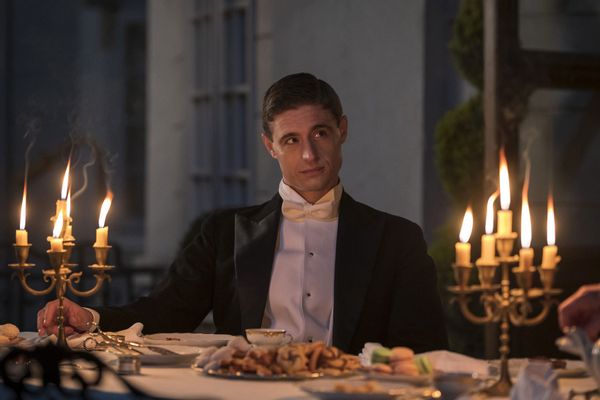 Flowers in the Attic: The Origin (A+E/Lifetime)And so many elements of the stories in the world of V.C. Andrews loom large in readers' and viewers' minds. You know that one of my favorite elements was the swan bed.
Flowers in the Attic: The Origin (A+E/Lifetime)And so many elements of the stories in the world of V.C. Andrews loom large in readers' and viewers' minds. You know that one of my favorite elements was the swan bed.
Oh yeah.
How was the swan bed created? I know it's in the story, but how did you decide how to make it your own for "Flowers in the Attic: The Origin"?
I'd seen the movie from the '80s, "Flowers in the Attic," and all the theatrical versions of it. Foxworth Hall didn't quite look the way I had pictured it. The swan bed didn't quite look the way I had pictured it. This was my chance to get what was in my head out there.
"I think that the ridiculous does happen in real life, and it could happen to any of us, and the horrifying could happen to any of us."
We were in pre-production in sort of the peak of the pandemic. It was the winter of December of 2020, January 2021. I was here in Los Angeles, and our art director was, I think, in South Africa at the time, about to go to Romania where we were shooting. We were on Zoom pretty much every day. And I was trying to describe what I wanted for the bed. I don't think it was translating. So, I started sketching it.
I wanted the wings to come out. I wanted it to be an enveloping bed, in a way. And that's how it started. And then we actually had it hand-carved out of wood in Romania. It took many months.
It's both beautiful and terrifying at the same time.
That's the goal. And Foxworth Hall, too, I wanted it to be big and imposing and scary but also achingly beautiful. And we were able to build a few of the biggest rooms on stages and the rest we found locations for.
It really does feel that way. I mean, it feels like a character in the show in a way that I've not felt about the Hall before.
That's good to hear. And I wish you could see the actual building because the actual location, the house, is about one-quarter the size of what you see on TV. So, most of the exterior that you're looking at on television is VFX.
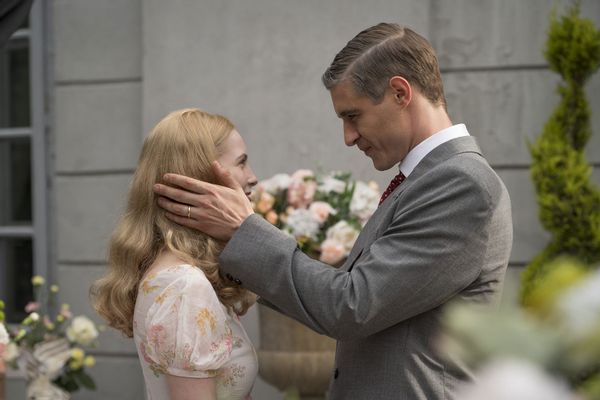 Flowers in the Attic: The Origin (A+E/Lifetime)How do you balance the melodrama of things like the swan bed and the stories we know so well from the V.C. Andrews world — how do you balance that kind of Gothic, over-the-topness with just really simple emotions of love and the kind of universal theme of family secrets?
Flowers in the Attic: The Origin (A+E/Lifetime)How do you balance the melodrama of things like the swan bed and the stories we know so well from the V.C. Andrews world — how do you balance that kind of Gothic, over-the-topness with just really simple emotions of love and the kind of universal theme of family secrets?
I go back to the same set of rules for whatever I'm working on, which is: How would someone actually react? I think that the ridiculous does happen in real life, and it could happen to any of us, and the horrifying could happen to any of us. I think it feels real to an audience if people around that event are reacting to it in a way that we might react to it as well.
"There are reasons why people become bad people, but they don't start out that way."
In this particular show, it was all about Olivia. It is very much her journey. All the characters have their own arc, but the story is really about: how does this woman become the grandmother who locks these children in an attic? And whenever I felt like we were straying either in story or in tone or whatever it was, whenever I was doubting our direction, I would just go back to Olivia. Where is she headed? Where are we on that journey right now? And how does this particular moment, be it a piece of wardrobe, a prop, story point, whatever— how does that serve her journey?
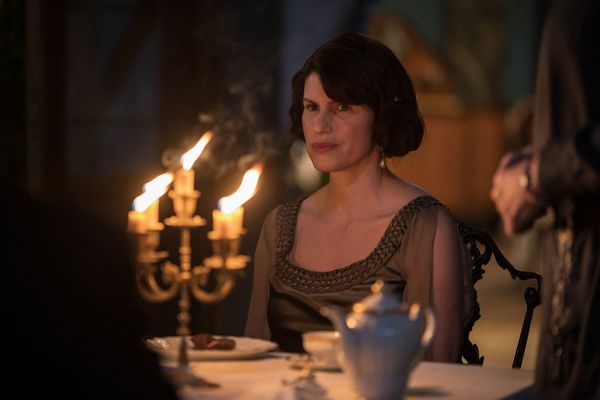 Flowers in the Attic: The Origin (A+E/Lifetime)I'm glad you brought Olivia up because I think it's remarkable what you've done with her here. She's so hated in the later stories. But in this story, her motives do become a little more clear, or at least we know the trauma that happened to her. What was the process of making her into a real person and not just the villain?
Flowers in the Attic: The Origin (A+E/Lifetime)I'm glad you brought Olivia up because I think it's remarkable what you've done with her here. She's so hated in the later stories. But in this story, her motives do become a little more clear, or at least we know the trauma that happened to her. What was the process of making her into a real person and not just the villain?
I don't think people are born monsters. I think that there are reasons why people do things and there are reasons why people do bad things. And there are reasons why people become bad people, but they don't start out that way. I was trying to figure out what that was for her, and the seeds of it were in "Garden of Shadows." The Olivia that we met in that book was a very strong minded, independent woman ahead of her time. So I took that and ran with it.
"It's really easy to point to Olivia as the villain, but Corrine, I think, has a lot of secrets and motivations that are questionable."
And to be honest, so much of Olivia is — you can put it on the page. You can hope, you can wish that it works out, but casting was such a big part of the character. And thank goodness Jemima Rooper came into my life. She was incredible. For five months in Romania, she was in almost every scene. She never had a day off. All credit to her for what Olivia became.
How did you decide the ending of the show?
I knew that I wanted for the last image the audience sees to be the grandmother locking the kids in the attic, because that was the arc. How did she get to that place? And that is about, I don't know, 80 to 100 pages into "Flowers in the Attic," the famous book . . . so we went beyond "Garden of Shadows."
"The entire book takes place through the lens of the kids in the attic. You don't know what's happening downstairs."
Robin Sheppard was our incredible director and we ended up shooting the last scene on the last day of production, which rarely happens. It was an emotional moment for all of us; we shot multiple versions of it. And in the edit, we sort of combined all of them into one.
It is emotional now that you mention it because it's scary. It sets up what we know is coming, but Olivia has been on such a journey.
I really do hope that there's a lot of blurred lines. Who's wrong? Is it Olivia? And why? And also, what about Corrine? I think that it's really easy to point to Olivia as the villain, but Corrine, I think, has a lot of secrets and motivations that are questionable . . . there's a lot we don't know about Corrine still. And I think that would be a really interesting place to explore in the future.
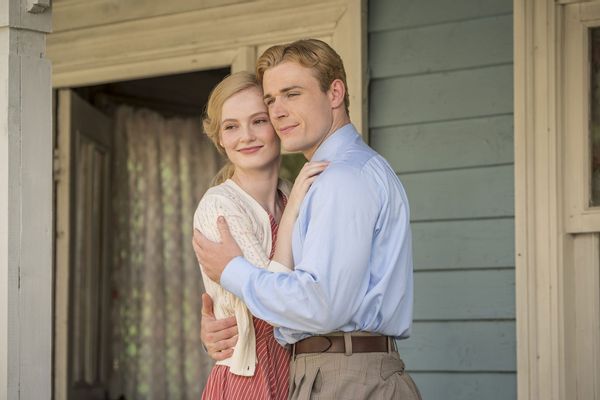 Flowers in the Attic: The Origin (A+E/Lifetime)That leads into a question I have, which is that V.C. Andrews has such a rich, deep canon, are more of her stories is going to be finding their way to the small screen soon?
Flowers in the Attic: The Origin (A+E/Lifetime)That leads into a question I have, which is that V.C. Andrews has such a rich, deep canon, are more of her stories is going to be finding their way to the small screen soon?
"She took that longing for a safe, secure, loving family and did the extreme."
Gosh, I don't know. I do know that Lifetime purchased the entire catalog, so they have all of them. I don't know what their plans are. I hope so. And I hope that we get to keep exploring our world that we started out with this mini-series, because I think there are a lot of questions like: What happened to Joel and Harry? What happened to Nella and her family? And there's a lot of questions that exist in "Flowers in the Attic" because the entire book takes place through the lens of the kids in the attic. You don't know what's happening downstairs.
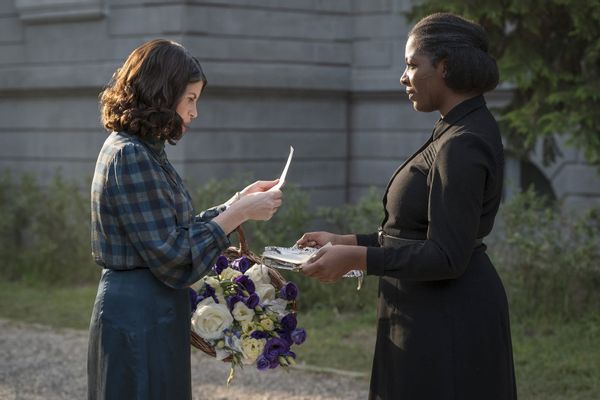 Flowers in the Attic: The Origin (A+E/Lifetime)You have no idea what's happening with Olivia, with Corrine, with Malcolm. You don't even know how Malcolm actually died. There's a lot of room for stories there to be explored hopefully in the future.
Flowers in the Attic: The Origin (A+E/Lifetime)You have no idea what's happening with Olivia, with Corrine, with Malcolm. You don't even know how Malcolm actually died. There's a lot of room for stories there to be explored hopefully in the future.
Want a daily wrap-up of all the news and commentary Salon has to offer? Subscribe to our morning newsletter, Crash Course.
Do you think the V.C. Andrews stories still appeal to young adults today who are maybe discovering this universe for the first time?
I hope so. I think that there's a universal appeal to them, and I think that our first glance is [this is] kind of odd and why is that? Because the stories are kind of creepy and the characters are doing things that are not necessarily good. I thought a lot about why they're so intriguing and why people continue to read the books and watch the movies to this day. I think it all comes down to this thing that V.C. Andrews understood, which is that families are where we're supposed to be able to go for safety and for assurance and for love — and for so many of us, that is not the case.
I think she took that longing for a safe, secure, loving family and did the extreme. She's putting out there a really heightened version of the bad version of what a family might be. But I think what most of us can relate to is the desire to fix our families and to make them better . . . And I think that, at the end of the day, is what's bringing people back because we all, most of us, know that our families are imperfect, and most of us would like to make them better. And there is something comforting in watching a family that is extremely imperfect on television.


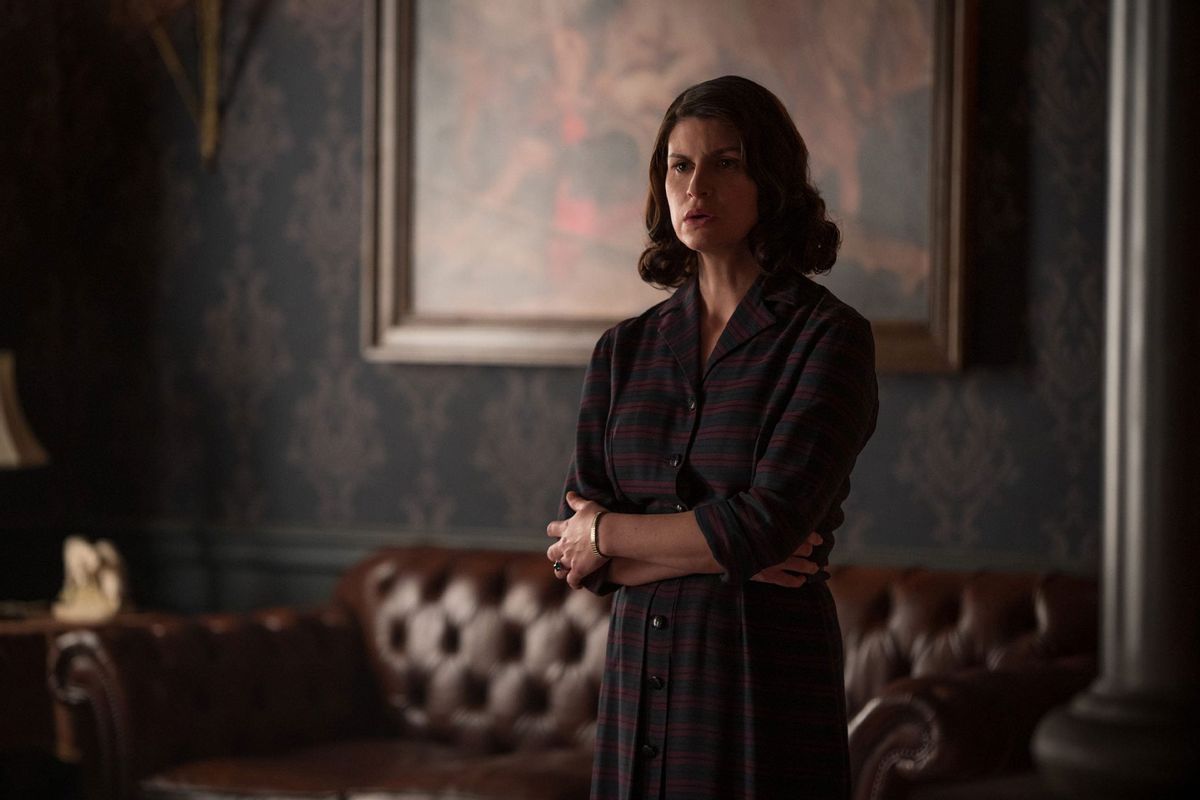
Shares